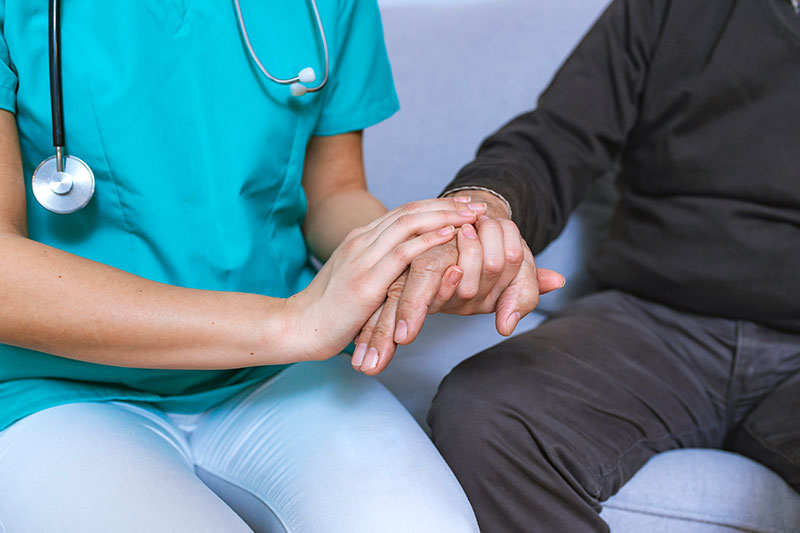Parkinson’s disease and its causes
Parkinson’s is a progressive brain disease affecting the movements of an individual at small and complex levels both, and everyone’s Parkinson’s journey is different. Parkinson’s disease is a complex nervous system disorder that influences movement. The symptoms start gradually, and tremors are typical. It begins with a barely visible slight shaking in just one hand. Therefore, the disease commonly causes inflexibility or reduction of movement. In the preliminary stages of Parkinson’s, your face may or may not show little expression. Your speech may become slurred. Parkinson’s disease symptoms could worsen as your condition progresses over time.
Even though Parkinson’s disease has no cure, medications reasonably improve your symptoms. Periodically, your doctor may suggest surgery to regulate certain regions of your brain and improve your symptoms.
Some of Parkinson’s symptoms may include:
- A tremor usually occurs in a limb, followed by your hand or fingers. You may rub your thumb and forefinger, also called a pill-rolling tremor. The arm may tremor when it is at rest as well.
- Slow movement (bradykinesia). Gradually, Parkinson’s disease might slow your flow, making simple tasks harder and time-consuming. You may take shorter steps when you walk. It may be troublesome to get out of a chair. You may drag your feet and struggle as you walk.
- Rigid muscles. Muscle rigidity may occur in any body part. The stiff muscles could be painful and restrict your movement.
- Deformed posture. Your position may develop stoop, or you may have problems keeping balance while standing or sitting because of Parkinson’s disease.
- Loss of automatic movements. You may have dropped the ability to perform natural actions, including blinking, smiling, or swinging arms when you walk.
- Speech changes. You might speak softly, quickly, or hesitate before talking. Your speech may be rather monotonous than usual. There may be a loss in tonality in speech as well.
- Writing changes. It may become difficult to write, and your writing might appear small.
Causes of Parkinson’s disease
Parkinson’s disease occurs by a loss of nerve cells in a part of the brain called the Substantia nigra. It leads to dropped chemical called dopamine in the brain, which is a significant chemical for controlling the movement of the body. A decrease in dopamine is responsible for many symptoms of Parkinson’s disease.
Precisely, what causes the loss of nerve cells is not evident. Most experts think that a compound of genetic and environmental factors is responsible.
Some of these factors appear to play a role:
Your genes: Experts and researchers have identified specific hereditary mutations that could cause Parkinson’s disease. But these are rare except in rare cases with many family members affected by Parkinson’s disease.
Environmental triggers: Exposure to some toxins or environmental factors may increase the risk of later Parkinson’s disease, but the risk is relatively small.
The presence of Lewy bodies: Cluster of specific elements within brain cells are little markers of Parkinson’s disease. These are called Lewy bodies, and experts believe these Lewy bodies hold a significant clue that causes Parkinson’s disease.
Alpha-synuclein is within Lewy bodies: Even though there are many substances discovered within Lewy bodies, scientists believe a significant one is the natural and extensive protein called alpha-synuclein. It is present in all Lewy bodies in a clump form that cells can not break down. It is currently a crucial focus on Parkinson’s disease researchers.
Diagnosis and Treatment
Parkinson’s disease is not curable, but medications can help control the symptoms. Those with Parkinson’s disease have low brain dopamine concentrations. Doctors do not administer dopamine directly, as it can’t enter the brain. In some cases, doctors may recommend surgery.
The doctor may recommend lifestyle changes like aerobic exercises and physical therapy to focus on balance and stretching. In some cases, for speech difficulties, a speech-pathologist may be recommended.
Surgical procedures
Surgery may only improve the motor functions in this disease. Though procedures like thalamotomy, sub thalamotomy, pallidotomy may be opted for in extreme xases.
Deep brain stimulation: In deep brain stimulation (DBS), the surgeon implants electrodes into a specific part of the brain. The electrodes send electrical pulses to your brain and may help reduce the symptoms of Parkinson’s.
Living with Parkinson’s disease can be challenging. Finding the right medication, support and learning strategies to deal with Parkinson’s can enhance the overall quality of life.





